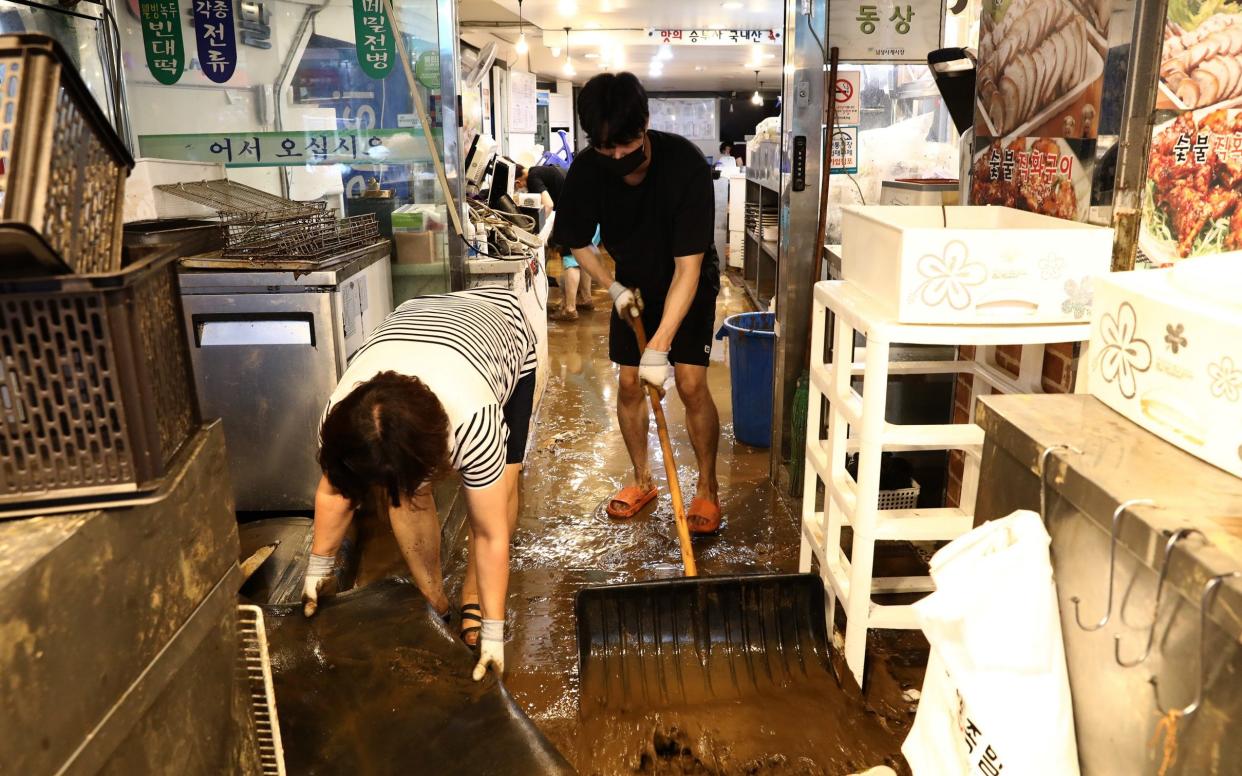Seoul under water as record rainfall kills eight in South Korea’s ‘Parasite’ basements

Seoul residents have been pictured wading through water up to their waists after record rainfall hit South Korea, killing at least four people living in basement flats immortalised in the film Parasite.
A further four people have been confirmed dead as a result of the floods which have knocked out power, caused landslides and left roads and subways submerged.
The southern part of the national capital received more than 100mm of rain per hour late on Monday, with some parts of the city hit with 141.5mm, the heaviest rainfall in decades, according to the Korea Meteorological Administration (KMA).
The accumulated rainfall in Seoul since midnight Monday stood at 451mm as of 2 p.m. Tuesday, with more forecast.
On Tuesday, Yoon Suk-yeol, South Korea’s president, visited a semi-basement apartment where three family members had died the night before after swift-moving flood waters filled the space.

The dangers of such underground flats, called banjiha, were famously depicted in a flooding scene in the 2020 Oscar-winning film Parasite.
Yoon told the area’s residents he would try to ensure their lives returned to normal as quickly as possible, and he instructed officials to look at measures to better ensure housing safety, according to a statement from his office.
By early Tuesday, at least five people had died in Seoul and three others in the neighbouring Gyeonggi Province, the Central Disaster and Safety Countermeasures Headquarters said.
Four, including three family members, had died after being drowned in flooded buildings, one was believed to have been electrocuted, another person was found under the wreckage of a bus stop, and the other two died in a landslide, it said.
At least nine people were injured, while seven were missing.

In the glitzy, dense Gangnam district, some buildings and stores were flooded and were without power, while cars, buses and subway stations were submerged, leaving people stranded.
Lim Na-kyung, a 31-year-old office worker, recounted her fears of Monday evening, saying the situation reminded her of a scene from the 1997 film Titanic.
“I had to keep going higher and higher because the building was submerging at a fast pace... I couldn't believe that I was trapped in a building with 40 other people in the middle of Gangnam district,” said the mother of two, who eventually had to spend the night at a Pilates centre on the fourth floor.

Data showed at least 765 facilities had been damaged. About 52 highways and roads have been blocked.
About 391 people were displaced in the greater Seoul area, most of whom had to stay at local schools and gyms. A further 399 had temporarily moved to community centres and schools, according to the data.
The headquarters raised the crisis alert to the highest and requested organisations adjust their working hours.

The KMA issued heavy rain warnings across the capital and the metropolitan area of 26 million as well as parts of Gangwon and Chungcheong Province.
The KMA expects heavy rainfall for the central part of the country to continue until at least Wednesday.
While South Korea often experiences heavy rains in summer, “such sharp increase in precipitation and frequent torrential rains cannot be explained without the big trend of climate change,” a KMA official, who spoke on condition of anonymity, told Reuters. “This phenomenon is seen occurring more often due to climate change that has resulted in a prolonged summer.”

 Yahoo Movies
Yahoo Movies 
